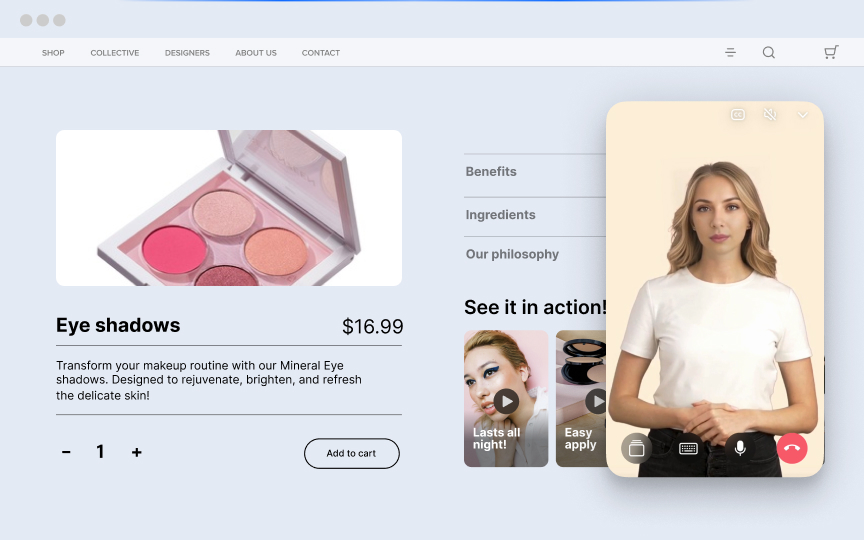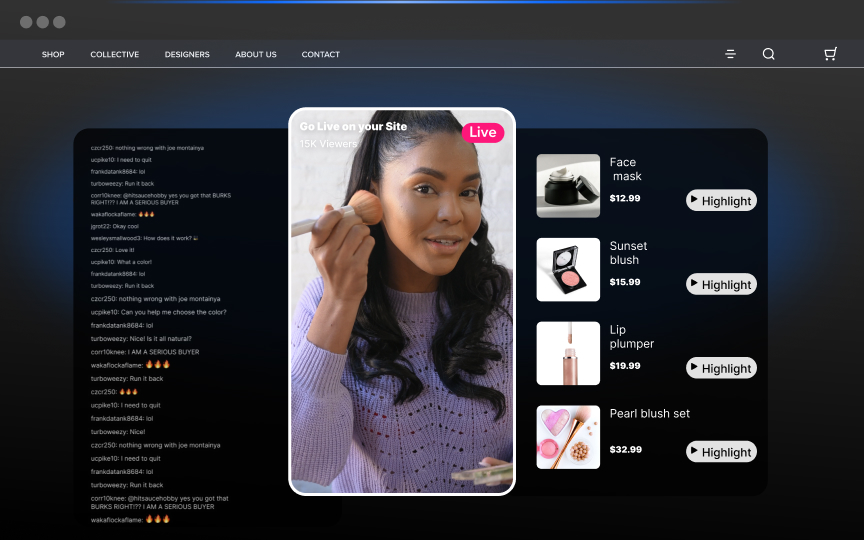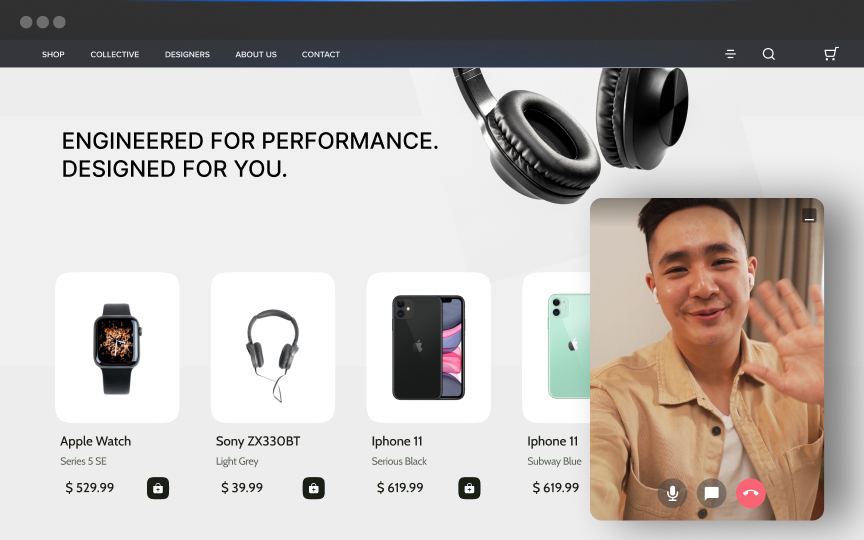The World’s Largest AI-Powered Video Commerce Platform
35%+ site conversion in just 30 days








Trusted by Fortune 500, global brands & retailers
























... and 1,500+ D2C brands
$1.2B+
Revenue lift
210M
Shoppers viewed
17M
Items sold
Five video commerce experiences.
One platform.
AI Virtual Assistant
Digital Showroom
1:1 Virtual Shopping
Long Video
$250M funding, top Silicon Valley team re-defining video experience on every website

STRATEGY LEADERSHIP AWARD
Firework Honored With Frost & Sullivan Award
Firework has been recognized with the prestigious 2024 Frost & Sullivan Competitive Strategy Leadership Award, highlighting our innovation and excellence in shaping the future of video commerce.
Learn more


Revolutionize Commerce with AI-Powered Video Solutions
Firework combines the power of AI and video to create immersive shopping experiences, personalized customer journeys, and measurable results.
Explore Firework AIGlobal video
infrastructure
With our enterprise-level, ultra-secure video infrastructure spanning the globe, your content is served from 132 carefully positioned locations worldwide, guaranteeing swift and dependable delivery across all continents.
1B+
Total short video views
100%
EU-U.S Data Privacy Compliance
132
Global Network locations

Compliance first
The only video platform that's SOC 2 and ADA compliant, and EU-US DPF certified, ensuring your enterprise meets the highest security and accessibility standards.




Zero drag on your website speed. You are running on the world's fastest video infrastructure
Firework works better than any other platform, including 31% faster than YouTube.
Firework
Video Commerce Solution

CONSULTING - STRATEGY, PLAYBOOK, OPERATION

SOFTWARE, INFRASTRUCTURE

END-TO-END CONTENT PRODUCTION & SERVICES
Seamless video integration across all channels
Discover how brands succeed
with video commerce
300+ member team, Silicon Valley HQ with a global presence.

6 Offices
San Mateo • New York • Toronto
London • Hong Kong • Tokyo


500+
of top retailers & leading global brands trust us.




























